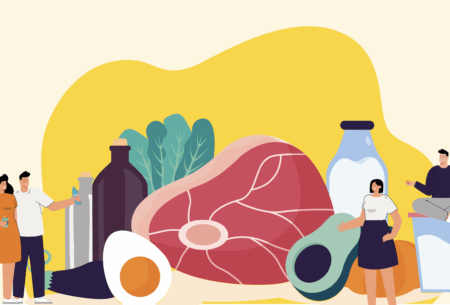It’s the evening, you’ve had a long day and spent hours lovingly preparing a beautiful home-cooked meal and as you pass the plate of food to your little one, the first thing they say is ‘NO’. The nightmare of fussy eating!
It is a battle many parents face at mealtimes, desperately trying to get balanced nutrition in tiny tummies. It can cause stress and anxiety for parents and they are not alone.
Although fussy eating and food refusal can feel like your child is being difficult, there is a term for it. Neophobia is the fear of new things which includes food and can develop from 18 months of age. This may explain why your toddler who you once termed ‘the baby who eats everything’ has now turned into a terror at each mealtime.
Be reassured that this fussy eating stage in most cases doesn’t last forever and resolves by the time they reach school age. Until then, here I’ve given you some top tips you may find helpful.
Stay calm
I know that it is easier said than done particularly when you’re worried your little one hasn’t eaten enough.
Toddlers and children are very good at picking up on anxiety and tension in the atmosphere which can exacerbate their own fear which can lead to them eating less.
So, if you can, appear to be keeping your cool and not reacting to them refusing food or throwing it on the floor. Even better, ignore what they are or aren’t eating and chat about something completely different to take the pressure off!
Eat with others
Children love to copy each other which is bad news if one is misbehaving but good news if you’ve got some good eaters around the table!
Eating together is a great way for your little one to learn about eating new foods so whether it be at nursery, playgroups, play dates, or a meal with the rest of the family, there are plenty of opportunities for them to learn from you and each other.
If you personally have any foods you don’t like, try not to vocalise that in front of a little one as this can influence their own decisions.
Also, if they are telling you they don’t like something, try adding the word “yet” to the end of the sentence to suggest that they will potentially like it in the future. If talking about the child’s preferences around others, instead of saying “they don’t like that” you could try “they’re still getting used to the taste of that” which can put a different spin on things and suggest they will get used to it at some point. Subtle changes can be really helpful!
Visual charts
Children are really visual so making a picture or chart to get them talking about food away from the table can be a nice way to get them used to different foods they’ve not tried yet or are currently refusing.
Get them involved in arts and crafts by printing out photos or cutting out food pictures from magazines or newspapers. You could create a weekly chart so they can see which new foods they are going to try on a particular day to mentally prepare them for what will be coming.
Whilst reward charts can sometimes be helpful for other aspects of child behaviour, we don’t recommend using these sorts of tool when it comes to eating. We want them to choose what they eat and feel comfortable with that, as well as learn to recognise when they’re full. While it can be difficult for us when large parts of the meal aren’t eaten, we should accept their decision, trusting that they will take what they need. Overriding this process can lead to issues later in life.
Get them involved
Control can play a part of why your little one is refusing food so involve them where possible to make them feel they have a sense of control.
This can include bringing them along to the food shop (or writing the shopping list!), give them choices of new foods to try that day or week and let them join you to prepare a meal so they feel involved in the process and feel that eating a new food was all their idea.
You could also try making a game with food. For example, if your little one doesn’t eat peas yet, you could try putting a few tablespoons of peas into one bowl and asking them to transfer them individually using a cocktail stick, spoon, or fingers, into a separate bowl. No pressure on eating at all. Sometimes (not always) they may have a little nibble during the game. Try not to say “well done” or react at all if this happens!
Give familiar foods alongside something new
Being given a plate of unfamiliar food (or food they perceive as unfamiliar!) can be daunting.
Offer them a ‘safe’ plate of food with a new food also on the plate or a side plate next to them.
They may well completely ignore it on the first few occasions but even just a touch or smell of the new food is super positive, and try not to praise them too much as we don’t want to make a big deal out of it as this could remind them that they were refusing it to begin with!
Another way this can work is by having foods served in bowls onto the table and each family member, including the child, serve themselves what they want. Don’t worry if they don’t pick up the new food, it’s often the repeated exposure which counts!
Summary
I hope the tips above make mealtimes easier in your household even with toddlers who have fussy eating!
If your child is excluding complete food groups or their growth is being affected by their restricted diet, seek advice from a medical professional or book in to see me, Chloe Elliott at The Gut Health Clinic where I can provide you with bespoke advice for your little one.












